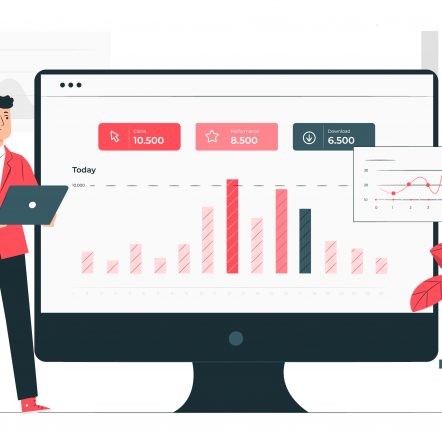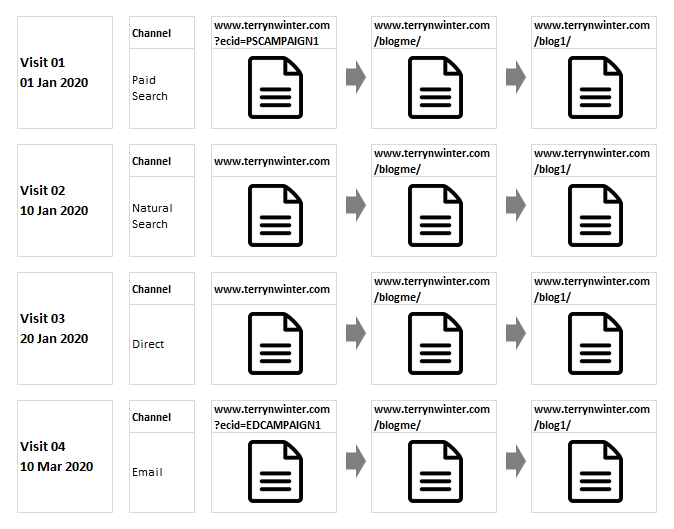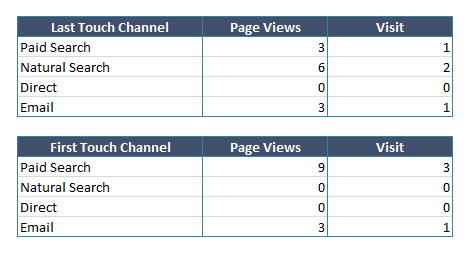There are plenty of internet posts related to setting up Marketing Channel Processing Rules and the difference between First Touch & Last Touch Channels, so I’m not going to explain them again in this post. So, let’s dive into our topic Visitor Engagement Expiration, i.e. Marketing Channel Expiration.
I was hesitated to use the term ‘Marketing Channel Expiration‘ as the post name because it didn’t deal with single allocation. For the conversion variables such as Tracking Code and eVars, we use single allocation and can therefore relate to just ‘Expiration‘. But Marketing Channel deals with both the First and the Last Touch attribution, so it’s only perfect to use ‘Engagement Expiration‘. So what it is?
Engagement Expiration refers to the time period between the activities of the visitor on your internet platform.
Consider the following example with the below assumptions:
- Marketing Channel Set-up was configured correctly.
- Marketing Channel Rules were configured using the URL Query String Parameter ‘ecid’.
- Marketing Paid Channels were configured in the following order followed by the Organic Channels such as Direct, Natural Search, Organic Social Media, etc.
‘ecid’ starts with ‘DI’ will fall under the Channel ‘Display’.
‘ecid’ starts with ‘ED’ will fall under the Channel ‘Email’.
‘ecid’ starts with PS’ will fall under the Channel ‘Paid Search’. - Didn’t touch Marketing Channel Expiration i.e. Set to default of 30 days.
- Organic Channel Direct was not enabled with Override Last-Touch Channel.
For First Visit, both the First Touch and the Last Touch Channels will be Paid Search.
For Second Visit, the First Touch Channel will still be Paid Search, but the Last Touch Channel will be Natural Search. This is because the second visit took place within 30 days of the first engagement.
For Third Visit, the First Touch will still be Paid Search and Last Touch Channel will still be ‘Natural Search’. This is because the third visit also took place within 30 days of the second engagement and Override Last-Touch Channel was not enabled for ‘Direct’.
But for Fourth Visit, both the First Touch and Last Touch Channels will be changed to ‘Email’.
If you try to understand the difference, the First Touch Channel was reset to ‘Email’ only on the Fourth Visit because there were more than 30 days between the Third and Fourth Visits i.e. Engagement. So, after the end of the engagement period, the First Touch Channel was reset to ‘Email’. But if we look at the Last Touch Channel, there’s no impact.
Thus First Touch and Last Touch Channel reports will look like below.
Conclusion:
- Visitor Engagement Period is not based on the first engagement but based on the recent engagement i.e. It will reset to the engagement period after every activity.
- Visitor Engagement Expiration is important for First Touch Channel attribution, but will not have any impact on the Last Touch Channel attribution.
Bonus Tip: While we do Marketing Channel Set-up and Configuration on Report Suite for the first time, it is important that all visitor engagement periods have to be expired manually. This is because, even before we set up the Marketing Channel, Adobe Analytics will enable the default Marketing Channel Setup and Configuration at the back-end raising to the attribution issues. So we will be receiving traffic to the channel ‘None’ if we didn’t expire the engagement periods manually(Considered as ‘None’ in Marketing Channel Reports). To expire the engagement periods manually, go to Admin > Report Suites > Select Report Suite > Edit Settings > Marketing Channels > Marketing Channel Expiration > Click on ‘Expire All’.
From this we need to understand that ‘None’ traffic in the Marketing Channel Report is not only due to incorrect Marketing Channel Set-up & Configuration, but also due to the above. So we should remember to manually expire the engagement period after the immediate completion of the Marketing Channel Setup & Configuration for the first time or whenever we delete or edit the Channels in Marketing Channels Processing Rules.








